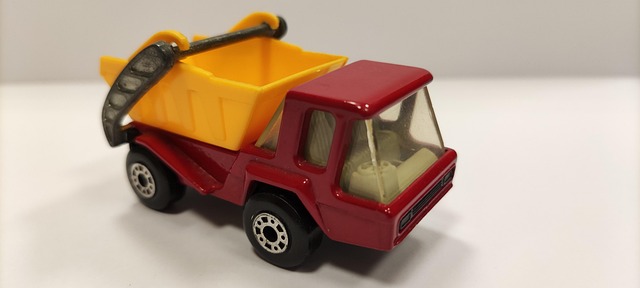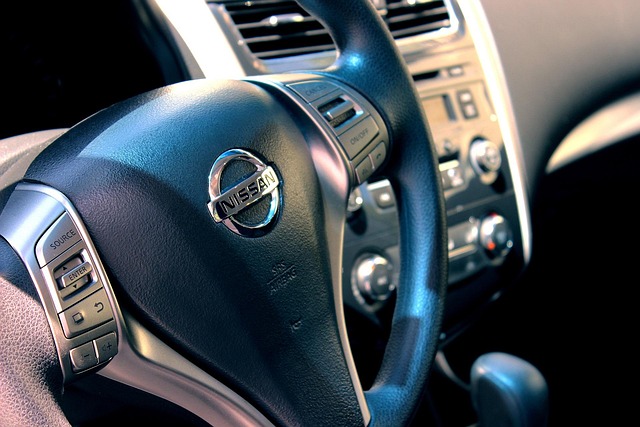Looking to register your car in California? This comprehensive guide will walk you through the entire process, from understanding eligibility to passing essential tests like DMV VIN verification. We’ll break down the required documents, application methods (online or in-person), vehicle inspections, and emission tests. By following these steps, you’ll be on your way to securing your vehicle’s registration smoothly and efficiently.
- Understand Eligibility for Car Registration in California
- Gather Required Documents for DMV Vin Verification
- Complete Online or In-Person Application Process
- Pass Vehicle Inspection and Emission Tests
- Obtain License Plate and Register Your Vehicle
Understand Eligibility for Car Registration in California

Before registering your car in California, it’s essential to ensure that both you and your vehicle meet the state’s requirements. One crucial step is understanding the eligibility criteria set by the Department of Motor Vehicles (DMV). In California, all vehicles operated on public roads must be registered with the DMV, including cars, trucks, and SUVs.
The process begins with a thorough inspection, which includes a dmv vin verification. This involves checking the vehicle’s unique identifier, known as the Vehicle Identification Number (VIN), to ensure it matches the data in the manufacturer’s records. You can facilitate this process with a mobile vin verifier or undergo a vin inspection at an authorized DMV location. This step is vital to confirm that your car is road-worthy and meets all safety standards.
Gather Required Documents for DMV Vin Verification

Before you can register your car in California, you’ll need to go through a process known as DMV VIN verification. This involves ensuring that your vehicle’s identification number (VIN) is valid and matches the specifications listed on official records. To facilitate this process, gather all the necessary documents required by the DMV for VIN verification. These typically include:
1. The title of the vehicle – If you’re the original owner, ensure it’s signed and has all relevant information filled out.
2. Your driver’s license or state-issued ID card.
3. Proof of insurance – This document should reflect current coverage for your car.
4. A completed Vehicle Registration Application form – This is available from the California DMV website.
5. If you’re registering a newly purchased vehicle, you might need to provide a bill of sale or purchase agreement.
6. For vehicles over 10 years old, a valid safety inspection certificate may be required.
Additionally, consider using a mobile VIN verifier or undergoing a mobile VIN inspection for added convenience and accuracy during this process.
Complete Online or In-Person Application Process

Registering a car in California involves either completing an online or in-person application process, depending on your preferences and circumstances. The first step for both methods is to gather all necessary documents, including proof of ownership, vehicle identification number (VIN) verification from the DMV, and perhaps a valid driver’s license. For an online application, you’ll need to access the California Department of Motor Vehicles (DMV) website and follow their step-by-step guide. This process often includes uploading photos of your vehicle and documents.
In-person registration involves visiting a local DMV office where a representative will assist you in filling out the forms. They may also conduct a VIN inspection to ensure the vehicle’s identity, which can be done either on-site or through a mobile vin verification service. This adds an extra layer of security, ensuring that the car is legitimate and not stolen. Once your application is complete and all requirements met, including successful VIN verification, you’ll receive your registration documents, making your vehicle legally registered in California.
Pass Vehicle Inspection and Emission Tests

In California, all vehicles must pass a thorough inspection to ensure they meet safety and environmental standards. The process typically involves a DMV (Department of Motor Vehicles) vin verification, which checks the vehicle’s identification number (VIN) against state records. This step is crucial as it confirms the vehicle’s history, including any previous accidents or outstanding issues. Additionally, emission tests are conducted to gauge the vehicle’s pollution levels and ensure compliance with California’s strict environmental regulations.
A mobile vin verifier or a vin inspection service can simplify this process by providing on-site testing and verification. These services often include a DMV-approved digital inspection, which streamlines the registration process for owners. By utilizing these modern tools, like mobile vin verification, you can save time and ensure your vehicle’s readiness for California roads without the hassle of visiting a stationary testing facility.
Obtain License Plate and Register Your Vehicle

After completing your vehicle’s purchase, it’s time to obtain a license plate and register your car with the California Department of Motor Vehicles (DMV). The registration process involves several steps, beginning with verifying the Vehicle Identification Number (VIN) to ensure the vehicle’s authenticity. This can be done through a DMV vin verification or by using a mobile vin verifier for a more convenient option.
Once the VIN inspection is complete and you have all necessary documents, including proof of ownership and insurance, you can head to your local DMV office. There, you’ll need to fill out registration forms and pay the required fees. This process will involve assigning a license plate to your vehicle, which completes the registration process, making your car legally recognized on California’s roads.
Registering a car in California is a straightforward process that requires understanding eligibility criteria, gathering essential documents for DMV VIN verification, and completing an application. By passing vehicle inspections and emission tests, you’ll be on your way to obtaining a license plate and officially registering your vehicle, ensuring compliance with state regulations. Remember to keep your documents up-to-date and familiarize yourself with local laws for a smooth registration experience.



